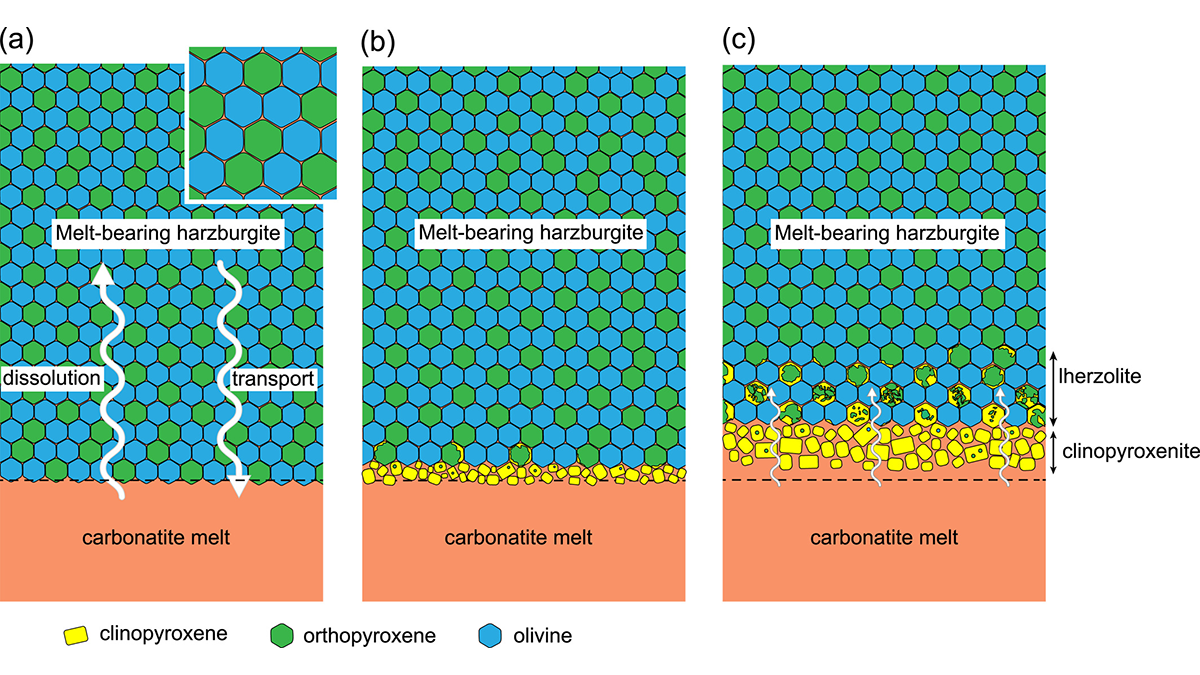Editors’ Highlights are summaries of recent papers by AGU’s journal editors.
Source: Journal of Geophysical Research: Solid Earth
Cratons are pieces of ancient continents with cold, buoyant, thick, and rigid lithosphere that has been stable for billions of years. However, the mantle beneath the North China Craton, which formed around 4.0 billion years ago, is unusual in having experienced destruction during the Mesozoic (<0.2 billion years ago). Various melt-peridotite reactions may have played a vital role in the modification of the lithospheric mantle beneath the North China Craton and are discussed in recent literature. However, the infiltration of CO2-rich melt and its effects on the minerals present in the mantle have not been previously studied in detail.
Using a series of high-pressure and high-temperature experiments, Wang et al. [2022] demonstrate that the reaction between carbonatite melt and refractory ancient lithospheric mantle could result in large-scale production of clinopyroxene-rich rocks. They suggest that this CO2-rich alteration was dominant in the ancient lithospheric mantle of the North China Craton before its destruction in the early Cretaceous and caused widespread chemical modification that led to the mechanical destruction of the eastern North China Craton. In contrast, silicate melt-peridotite interaction forms pyroxenite/garnetite veins: this reaction with silicate melts has been predominant in the juvenile lithospheric mantle since the late Cretaceous (60 million years).
Citation: Wang, X., Zhang, J., Wang, C., Zong, K., & Xu, H. (2022). Experimental constraint on Ca-rich carbonatite melt-peridotite interaction and implications for lithospheric mantle modification beneath the North China Craton. Journal of Geophysical Research: Solid Earth, 127, e2022JB024769. https://doi.org/10.1029/2022JB024769
—Sujoy Ghosh, Associate Editor, Journal of Geophysical Research: Solid Earth

